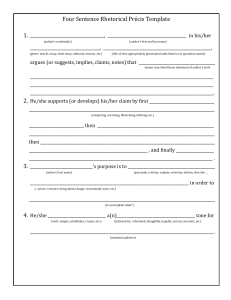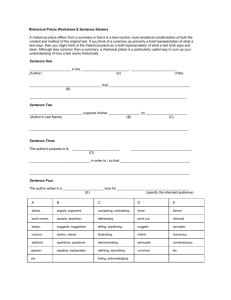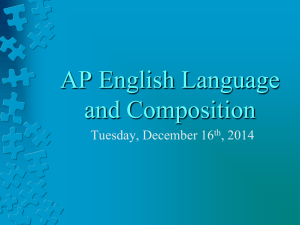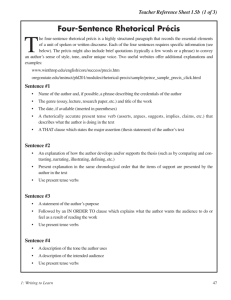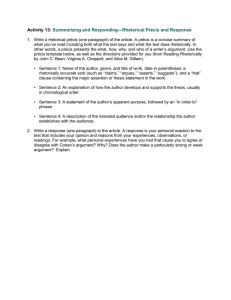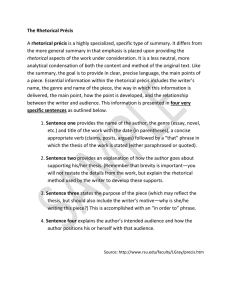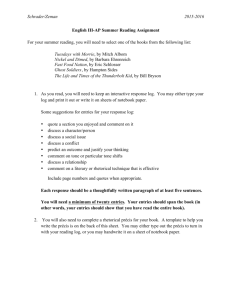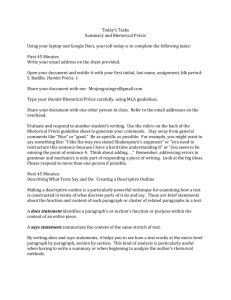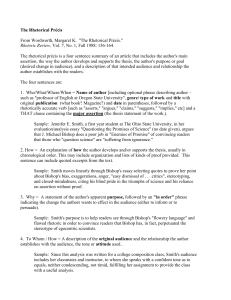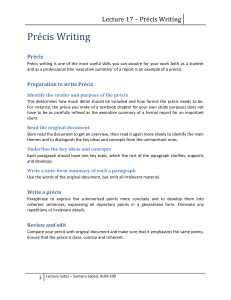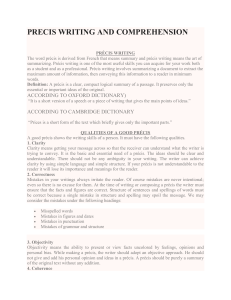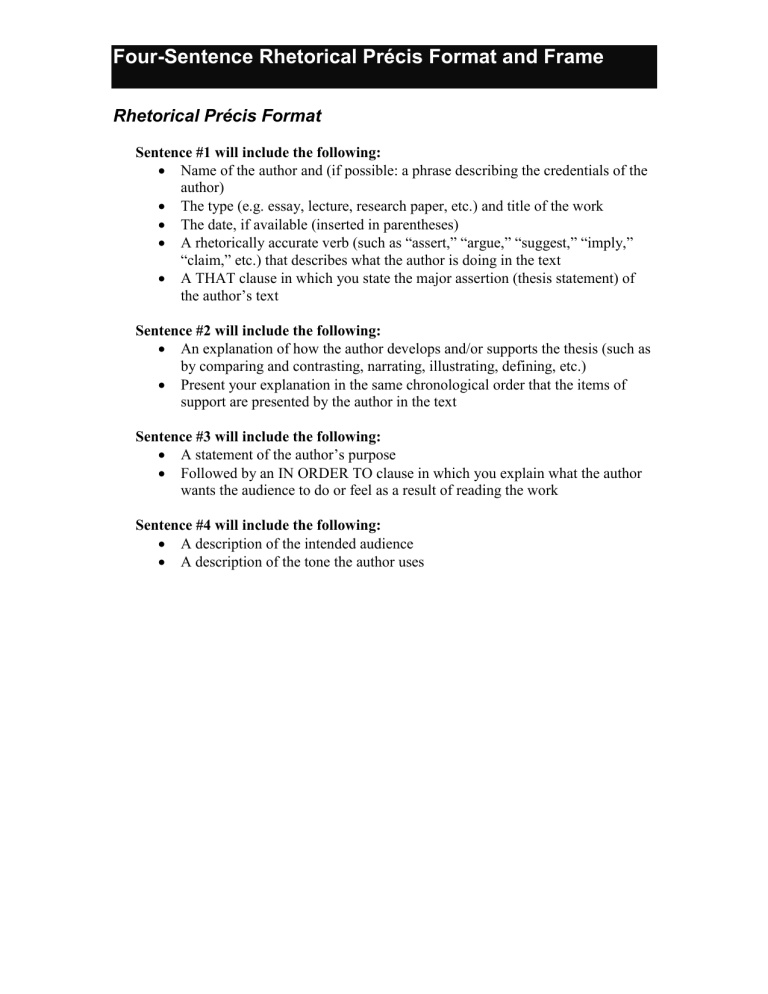
Four-Sentence Rhetorical Précis Format and Frame Rhetorical Précis Format Sentence #1 will include the following: Name of the author and (if possible: a phrase describing the credentials of the author) The type (e.g. essay, lecture, research paper, etc.) and title of the work The date, if available (inserted in parentheses) A rhetorically accurate verb (such as “assert,” “argue,” “suggest,” “imply,” “claim,” etc.) that describes what the author is doing in the text A THAT clause in which you state the major assertion (thesis statement) of the author’s text Sentence #2 will include the following: An explanation of how the author develops and/or supports the thesis (such as by comparing and contrasting, narrating, illustrating, defining, etc.) Present your explanation in the same chronological order that the items of support are presented by the author in the text Sentence #3 will include the following: A statement of the author’s purpose Followed by an IN ORDER TO clause in which you explain what the author wants the audience to do or feel as a result of reading the work Sentence #4 will include the following: A description of the intended audience A description of the tone the author uses Four-Sentence Rhetorical Précis Format and Frame Rhetorical Précis Frame _____________________________ , _______________________________ (author’s first and last name) (appositive stating author’s credentials) in his/her ________________________________, argues that___________________ (type of text) _____________________________________________________________________. He/she supports the claim by first__________________________________, then _________________________________________________________, then _________________________________________________________________, and finally ____________________________________________________________. ________________________’s purpose is to _________________________________ (author’s last name) (what the author does in the text) ____________________________________________________________ in order to _______________________________________________________________________. (what the author wants the audience to do after reading the text) He/she adopts a(n) _________________________ tone for_______________________. (intended audience)
